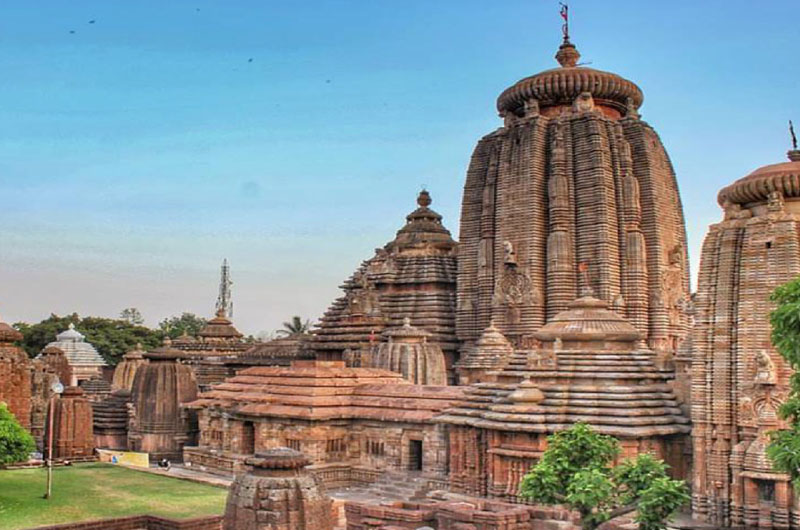
Lingaraj Temple, Odisha: The Majestic Jewel of Bhubaneswar
In the heart of Bhubaneswar, the capital city of Odisha, stands a monumental testament to ancient Indian architecture and spirituality: the Lingaraj Temple. Dedicated to Lord Shiva, this 11th-century temple is a masterpiece of Kalinga architecture and a significant pilgrimage site. The Lingaraj Temple is not just an architectural marvel but also a vibrant center of cultural and religious activities. With its towering spires and intricate carvings, it offers a glimpse into Odisha’s rich heritage and the grandeur of its temple craftsmanship. This guide provides an extensive exploration of the Lingaraj Temple, including its history, architectural features, tourism specialty, nearby attractions, and practical information for visitors.
History of Lingaraj Temple
Ancient Origins
- Historical Significance: The Lingaraj Temple is believed to have been constructed during the reign of the Somavamsa dynasty in the 11th century. It is one of the oldest and most significant temples in Bhubaneswar, representing the zenith of Kalinga architecture.
- Legends and Lore: According to local legends, the temple is said to be built on the site where Lord Shiva appeared as a lingam (a representation of Shiva) to bless the region. The temple’s association with Lord Shiva and the stories surrounding its construction contribute to its revered status.
Architectural Evolution
- Construction and Renovations: The temple was originally built by King Jajati Keshari of the Somavamsa dynasty and later expanded by subsequent rulers. Over the centuries, the temple has undergone various renovations, preserving its architectural integrity while adapting to changing times.
- Architectural Style: The temple exemplifies the Kalinga style of architecture, characterized by its towering spires, intricate carvings, and ornate sculptures. The design reflects a blend of religious symbolism and artistic excellence.
Architectural and Religious Features
Temple Architecture
- Main Shrine: The Lingaraj Temple’s main shrine, dedicated to Lord Shiva, is an impressive structure with a towering Vimana (sanctum) and a richly adorned Jagamohana (assembly hall). The main deity, known as Lingaraj, is represented by a large lingam in the sanctum.
- Intricate Carvings: The temple’s walls are adorned with intricate carvings depicting various deities, mythological scenes, and floral motifs. These carvings showcase the skill and artistry of the craftsmen of the time.
- Lingam and Yoni: The central deity of the temple is a combination of the lingam and yoni (the female counterpart), symbolizing the divine union of Shiva and Shakti.
Rituals and Practices
- Daily Rituals: The Lingaraj Temple follows a rigorous schedule of daily rituals and offerings, including morning and evening prayers, aarti (ritual light offerings), and abhishekam (ritual bathing of the deity). Devotees visit the temple to participate in these sacred ceremonies.
- Festivals: The temple hosts several major festivals throughout the year, including Shivaratri, Rathyatra, and Durga Puja. These festivals are celebrated with grand processions, special rituals, and community festivities.
Tourism Specialty and Locality
Unique Features
- Cultural Heritage: The Lingaraj Temple is a prime example of Kalinga architecture and provides valuable insights into the cultural and religious practices of ancient Odisha. Its historical significance and architectural beauty make it a major attraction for history enthusiasts and tourists.
- Pilgrimage Destination: The temple is a significant pilgrimage site for devotees of Lord Shiva. The spiritual atmosphere, combined with the temple’s majestic architecture, creates a profound and immersive experience for visitors.
Locality
- Location: The Lingaraj Temple is situated in Bhubaneswar, the capital city of Odisha, which is well-connected by road, rail, and air. The temple is centrally located in the Old Town area, making it easily accessible from various parts of the city.
- Accessibility: Bhubaneswar is well-connected to major cities in India, including Kolkata, Chennai, and Delhi. The nearest airport is Biju Patnaik International Airport, located about 6 kilometers from the temple. The city also has a well-developed railway network and road infrastructure.
Best Time to Visit
Ideal Seasons
- Winter Season (October to March): The winter months are the most comfortable time to visit Bhubaneswar. The weather is pleasant and cool, making it ideal for exploring the temple and other attractions in the city.
- Festivals: Visiting during major festivals such as Shivaratri (February-March), Rathyatra (June-July), and Durga Puja (September-October) offers a unique opportunity to witness the temple’s vibrant celebrations and immerse yourself in the local culture.
Monsoon Season (June to September)
- Weather Conditions: While the monsoon season brings heavy rainfall and lush greenery, it can also lead to travel disruptions. If you prefer to experience the temple during this time, be prepared for occasional rain showers and possible delays in travel.
Nearby Tourist Spots
In Bhubaneswar
- Raja Rani Temple: Located about 2 kilometers from the Lingaraj Temple, the Raja Rani Temple is known for its exquisite carvings and unique architectural style. It is dedicated to Lord Shiva and Goddess Parvati.
- Mukteshwar Temple: Approximately 3 kilometers from Lingaraj Temple, the Mukteshwar Temple is famous for its ornate carvings and intricate sculptures. It is considered a gem of Kalinga architecture.
- Udayagiri and Khandagiri Caves: These ancient rock-cut caves, situated about 8 kilometers from the temple, offer a glimpse into the region’s Buddhist heritage. The caves are known for their historical significance and scenic surroundings.
Nearby Attractions
- Konark Sun Temple: Located about 65 kilometers from Bhubaneswar, the Konark Sun Temple is a UNESCO World Heritage Site renowned for its stunning architecture and intricate stone carvings. It is dedicated to the Sun God and features a chariot-shaped temple structure.
- Puri: Approximately 60 kilometers from Bhubaneswar, Puri is a famous pilgrimage destination known for the Jagannath Temple and its beautiful beaches. It is a significant site for devotees and tourists alike.
- Chilika Lake: About 100 kilometers from Bhubaneswar, Chilika Lake is the largest brackish water lagoon in Asia. It is a popular spot for birdwatching, boating, and enjoying the serene natural beauty.
Best Places to Eat
Local Dining Options
- Dalma: Located in Bhubaneswar, Dalma offers a variety of traditional Odia dishes, including dalma (a lentil and vegetable stew) and pakhala (fermented rice). It is known for its authentic flavors and local specialties.
- Kanika: Situated near the Lingaraj Temple, Kanika provides a range of South Indian and Odia cuisine. It is a popular choice for pilgrims and tourists looking for a quick and satisfying meal.
Nearby Restaurants
- The Orchid: Located in Bhubaneswar, The Orchid offers a diverse menu that includes Indian, Chinese, and continental dishes. It is known for its comfortable ambiance and quality food.
- Hotel Swosti Premium: This restaurant in Bhubaneswar provides a range of dining options, including traditional Odia cuisine and international dishes. It is known for its elegant setting and excellent service.
Hotels Near Lingaraj Temple
Luxury Hotels
- Mayfair Lagoon: Situated in Bhubaneswar, Mayfair Lagoon offers luxurious accommodations with modern amenities, a spa, and various dining options. It is known for its elegant design and exceptional service.
- Hotel Swosti Premium: This upscale hotel in Bhubaneswar provides comfortable rooms, a range of facilities, and fine dining options. It is well-suited for travelers seeking a high-end experience.
Budget Hotels
- Hotel Kalinga: Located in the vicinity of the Lingaraj Temple, Hotel Kalinga offers affordable accommodations with basic amenities. It is a convenient option for pilgrims and budget travelers.
- Hotel Suryansh: Situated near the temple, Hotel Suryansh provides budget-friendly lodging with essential facilities. It is a popular choice for those looking for simple and cost-effective accommodations.
Pilgrimage and Visitor Experience
Visiting the Temple
- Entry and Permits: The Lingaraj Temple is open to devotees and tourists throughout the year. There is no entry fee, but visitors are expected to follow the temple’s dress code and maintain decorum within the premises.
- Temple Etiquette: Visitors are required to dress modestly and remove their shoes before entering the temple. It is also important to respect the religious practices and observe silence within the temple complex.
Exploring the Temple
- Temple Tour: A guided tour of the temple can enhance the visitor experience by providing insights into the temple’s history, architecture, and rituals. Guides are available to explain the significance of various features and practices.
- Shopping and Souvenirs: The area around the temple has several shops selling religious artifacts, souvenirs, and local handicrafts. Visitors can explore these shops to purchase mementos of their visit.
Conclusion
The Lingaraj Temple stands as a monumental example of Kalinga architecture and spiritual devotion, drawing visitors with its majestic presence and rich history. Its intricate carvings, vibrant rituals, and cultural significance make it a must-visit destination for both pilgrims and tourists. Whether you are exploring the temple’s architectural grandeur, participating in its sacred rituals, or discovering the surrounding attractions, a visit to the Lingaraj Temple promises a memorable and enriching experience.
